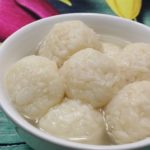The black-and-yellow striped spider, also known as the banana spider, is scientifically named Nephila pilipes and can be found throughout Southeast Asia and Oceania. In Vietnam, they are particularly prevalent in the districts of Yen Thanh in Nghe An province and Tuy Phong in Binh Thuan province.
This spider has six legs, a black body adorned with yellow stripes on its back, and yellow spots on its underside. The male of the species has a hint of powdery coloring, resulting in less vibrant yellow stripes compared to its female counterpart.

Local residents share that these spiders typically start to appear between May and August, especially during rainy days. They spin their webs between branches at a height that is just out of human reach. Given their docile nature and slow movement, they can be easily captured by gently prodding them with a dry bamboo branch, causing them to fall.
Mr. Thanh, a resident of Lang Cau hamlet in Lang Thanh commune, Yen Thanh district, recounts that in the past, these spiders were often caught and consumed as a source of nourishment during food shortages. The quickest way to prepare them is to skewer and roast them over charcoal. Alternatively, for a more flavorful experience, they can be stir-fried with fish sauce or salt.
“These spiders are easy to catch, but one must be cautious as they can bite. While they are not venomous, the bite area can become swollen and take several days to heal. Locals consider this spider a delicacy of the mountains and forests, and it also makes for a tasty snack,” added Mr. Thanh.
Beyond being a rustic dish, these spiders have also become a source of income for locals. A kilogram of these spiders can fetch a price ranging from 100,000 to 300,000 VND, depending on their size. On a lucky day, an individual can catch over a kilogram of spiders, which are then purchased by traders on-site.

Ms. Ngoc, a spider catcher in Lang Thanh commune, Yen Thanh district, shared: “To catch these spiders, one must venture deep into the forest, which can be quite arduous and dangerous due to the treacherous terrain. However, the extra income helps make ends meet. After catching them, I set some aside for personal consumption, and the rest are sold to traders.”
Despite being a local delicacy, Mr. Nguyen Trong Huong, Director of the Yen Thanh Agricultural Service Center, advised against consuming these spiders: “We recommend against eating spiders. They play a crucial role in the ecosystem, and while they may be considered pests, they also have their benefits. Moreover, the natural environment harbors a diverse array of plants and animals, some of which may contain toxins that can be harmful to humans.”
Experts also caution that individuals with a history of insect allergies should refrain from consuming these spiders to prevent the risk of poisoning.
































